I know, for example, that you cannot assume that a replacement gas tank for a sedan will fit a wagon. Usually it won't, and that is the case for this car. Luckily, you can now buy a replacement gas tank for a Comet or Ford Falcon wagon, and the same tank also will fit a Falcon Ranchero, the car/pickup truck combo. The only problem is, you can only get this replacement tank from one guy who sells on that auction site. About a month ago I finally pulled the trigger and bought a tank because I was pretty certain the tank on the Comet is original and is rusty on the inside. Rust, unfortunately, does not improve the performance of an engine.
Anyway, the tank didn't show up, and it turns out UPS lost it. And, it was the last one the seller had from his current stock. And, the manufacturer has been slow to fill his restock order. So I'm patiently, I mean REALLY patiently, waiting.
Today I figured I should go ahead and remove the old tank and see what I had. If a hard-to-find gas tank is not completely rusted through, you can sometimes find a radiator repair shop that will clean your tank and reline the inside and make it like new. The price is comparable to what I'm paying for my ghost tank, which is about twice what a replacement sedan tank costs.
Anyway, I've pulled gas tanks from several old Cougars and from my old 1969 Colony Park wagon, so I was familiar with what to do, what not to do, how to do it safely, and what to expect. The Comet tank came out very easily, and just as I figured, the inside had some old gas and a hearty portion of crunchy rust particles. I think it is restoreable if I never see my replacement tank that I am PATIENTLY waiting for.
I won't bore you with all the steps in getting the tank out, but here are a few photos.
The tank is held in place by two of these thin metal straps, and two J-shaped bolts connect the straps to the frame under the car. I will use a wire brush attachment on my power drill to knock off all the surface rust on these straps then paint them before installing the new tank.
I'll wire brush this J-bolt and paint it so it won't rust again.
The tank already removed - doesn't look too bad from this angle. The outside has some surface rust but I don't see any holes in it. Inside, however, there's rust clinging to the tank and a lot of crunchy pieces floating around. The small amount of old gas will be taken to the county dump where you can drop off old fuel to be disposed of properly.
End of sending unit has a metal prong that connects to a wire which sends an electric signal to the dash fuel gauge. This also is where a rubber fuel hose connects the metal fuel line between the tank in back and the mechanical fuel pump that's attached to the engine and pumps the fuel into the carburetor.
This sending unit shows that rust was pretty pervasive inside the tank. That thing that looks like a small bag looks to me like it was rigged as a replacement. There should be something more like an aluminum or brass cylinder in its place. That cylinder piece floats in the fuel and moves as the amount of fuel in the tank goes down.
As far as I know, these sending units are unique to the Ranchero and Falcon and Comet wagon, and I don't think they are reproduced, so I will have to send it off to have it rebulit. The antique car hobby is big enough that there are small businesses that specialize in doing things like rebuilding fuel sending units from various makes of old cars. So for maybe $75 to $100 I can get this back in functioning, almost like new condition.
That's the end of our gas tank removal lesson. Now I will return to WAITING PATIENTLY for the new tank. Once I get that thing installed in the car (fingers crossed) I think I will be ready to take it on some test drives.

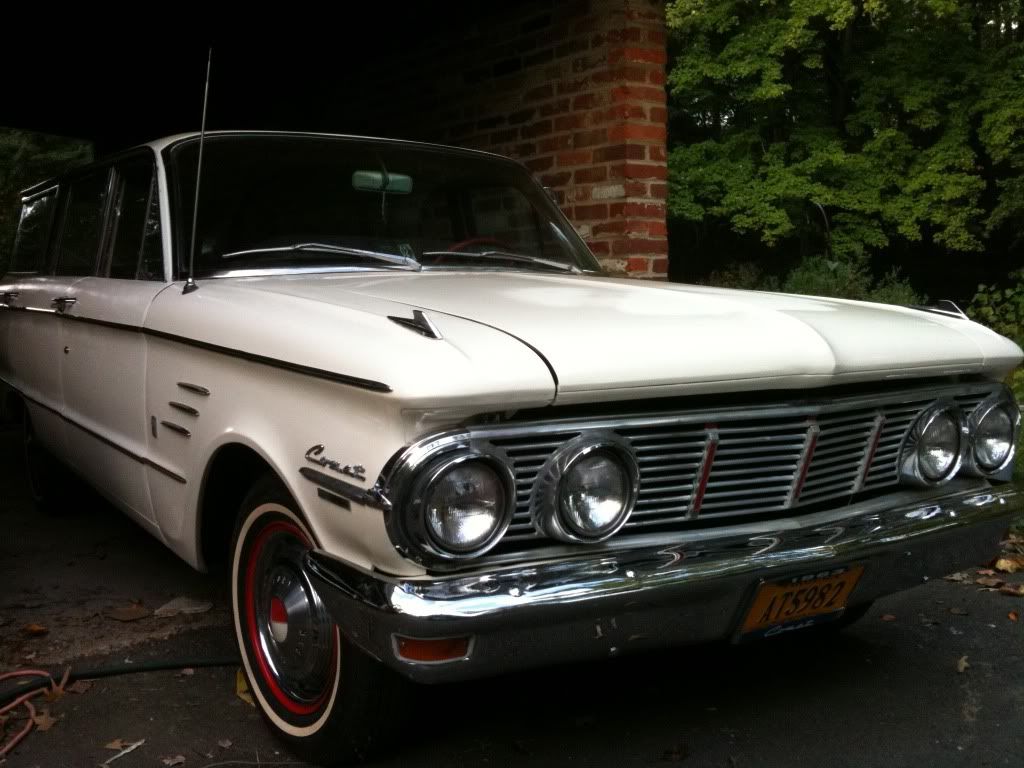
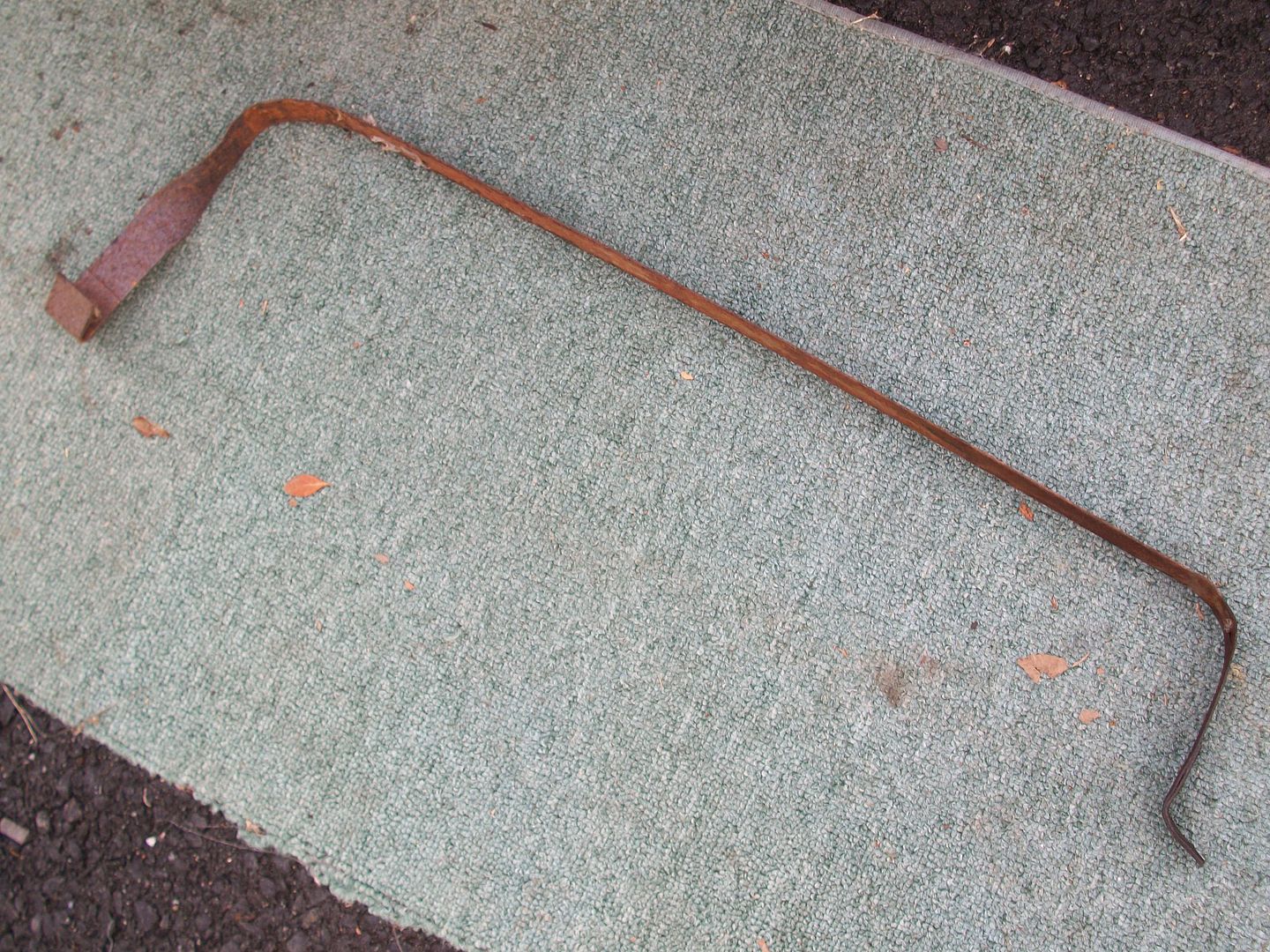
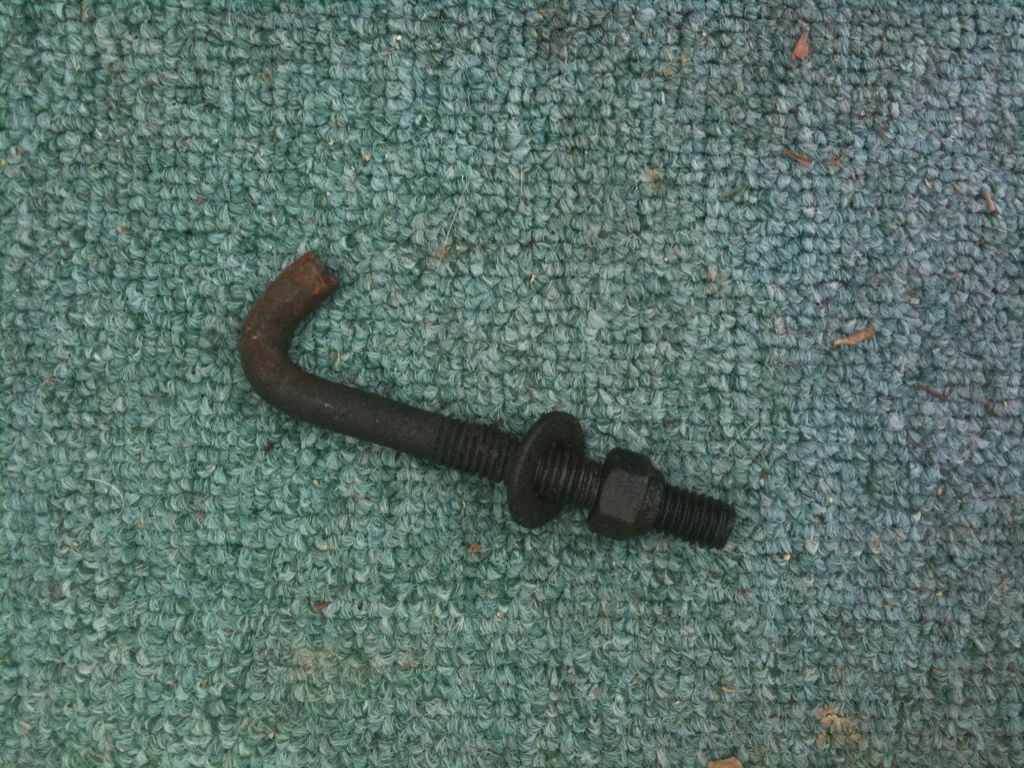
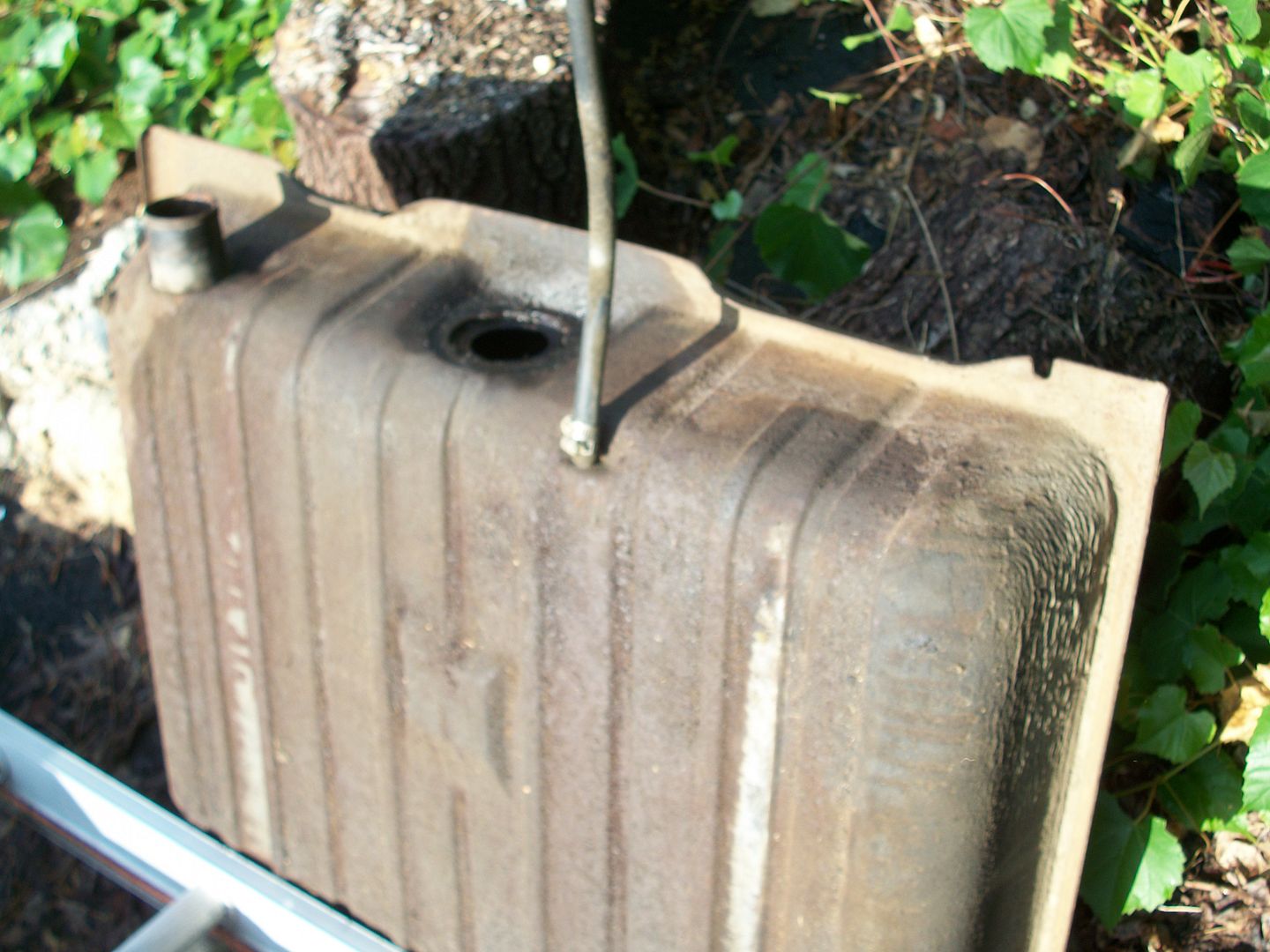
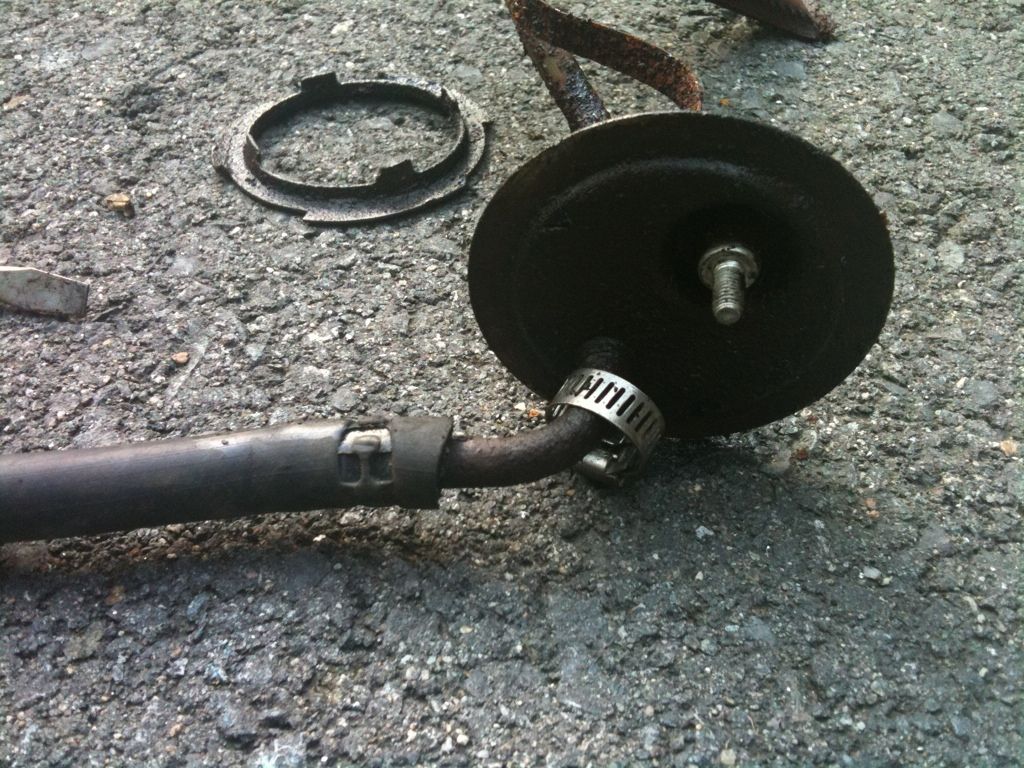
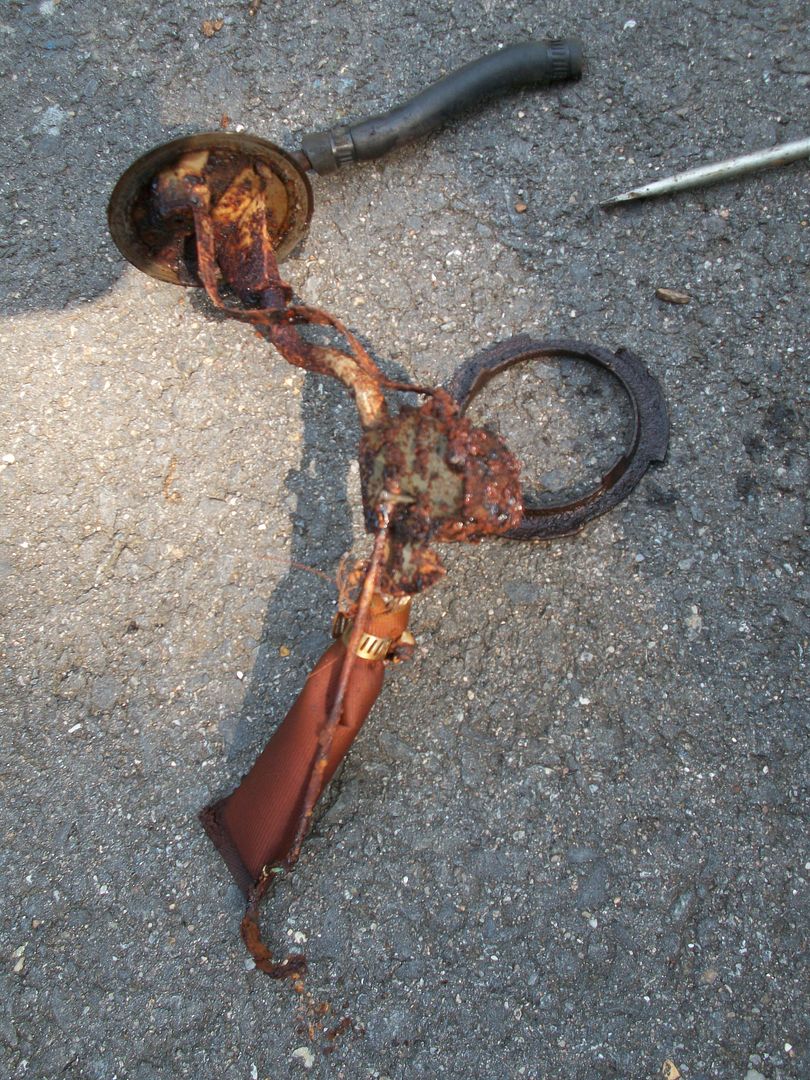
I don't know much about gas tanks... but your Comet is GORGEOUS!!!
ReplyDeleteI wish I could find a running Ranchero. We had one when I was little, and it would be the perfect size for me now.
ReplyDeleteI agree Barbara, I sure wish the falcon-based ranchero was still made. I see decent driver-quality ones come up for sale occasionally, usually on the west coast. If you get truly obsessed with the idea, I can suggest several online places to look for one.
ReplyDelete